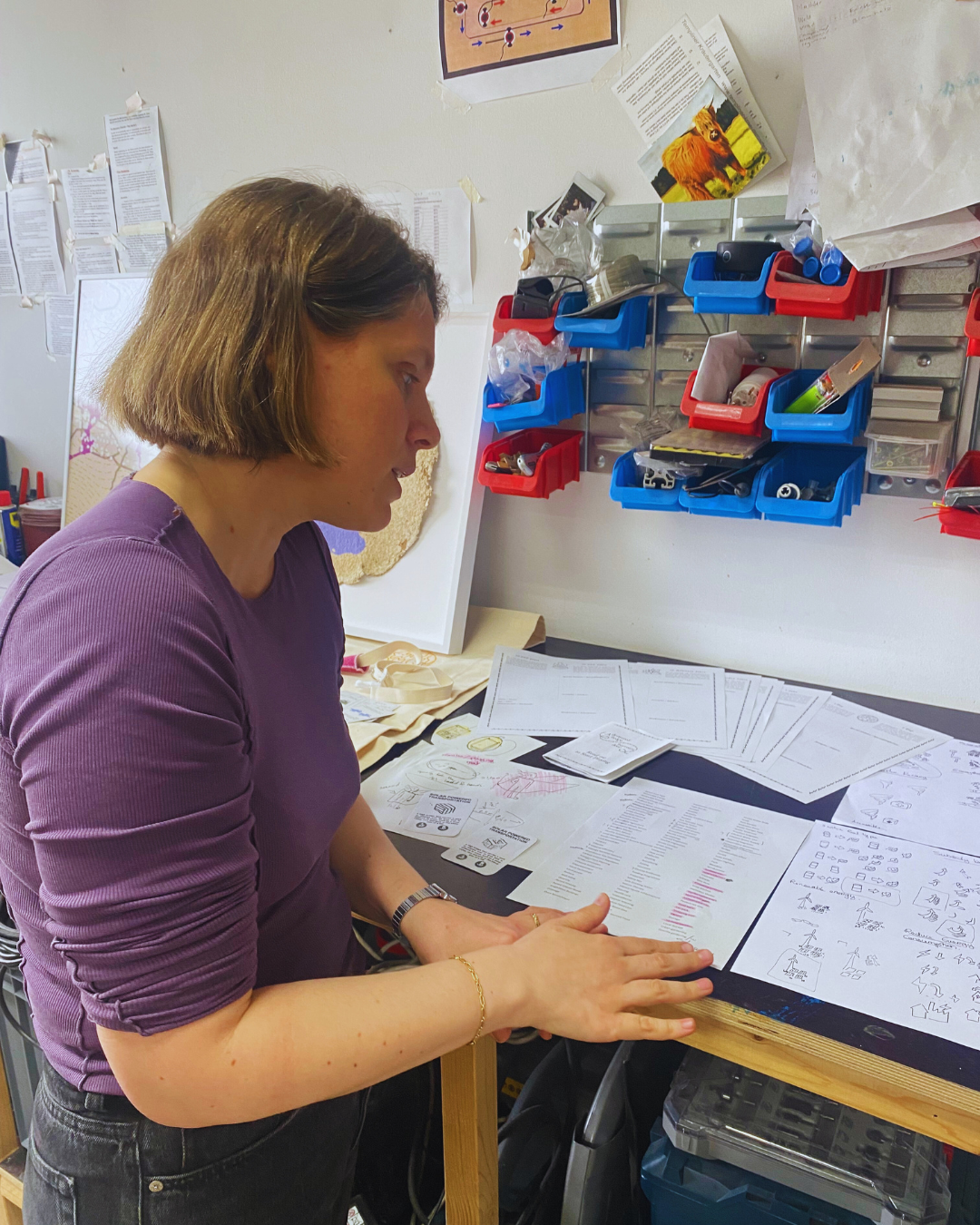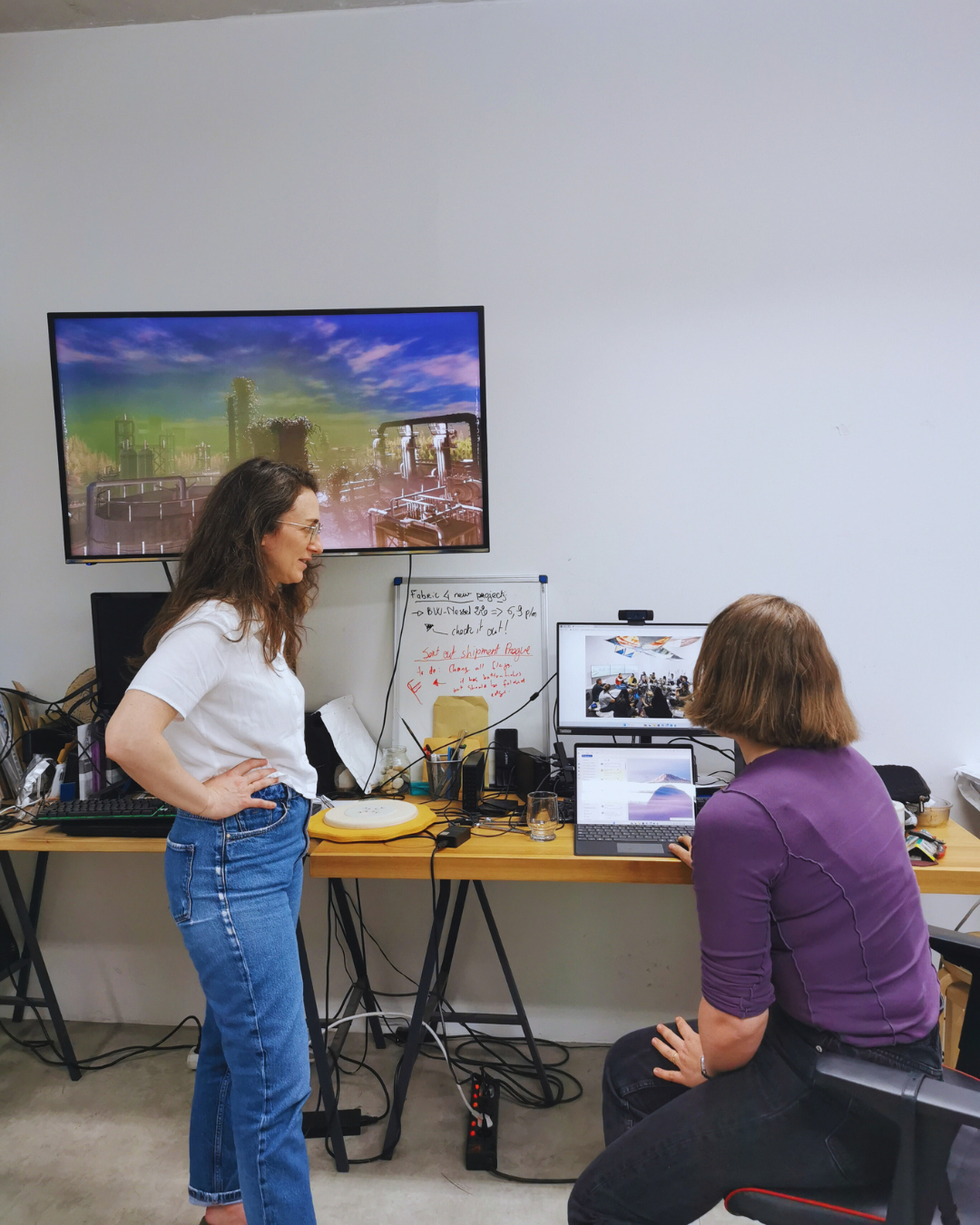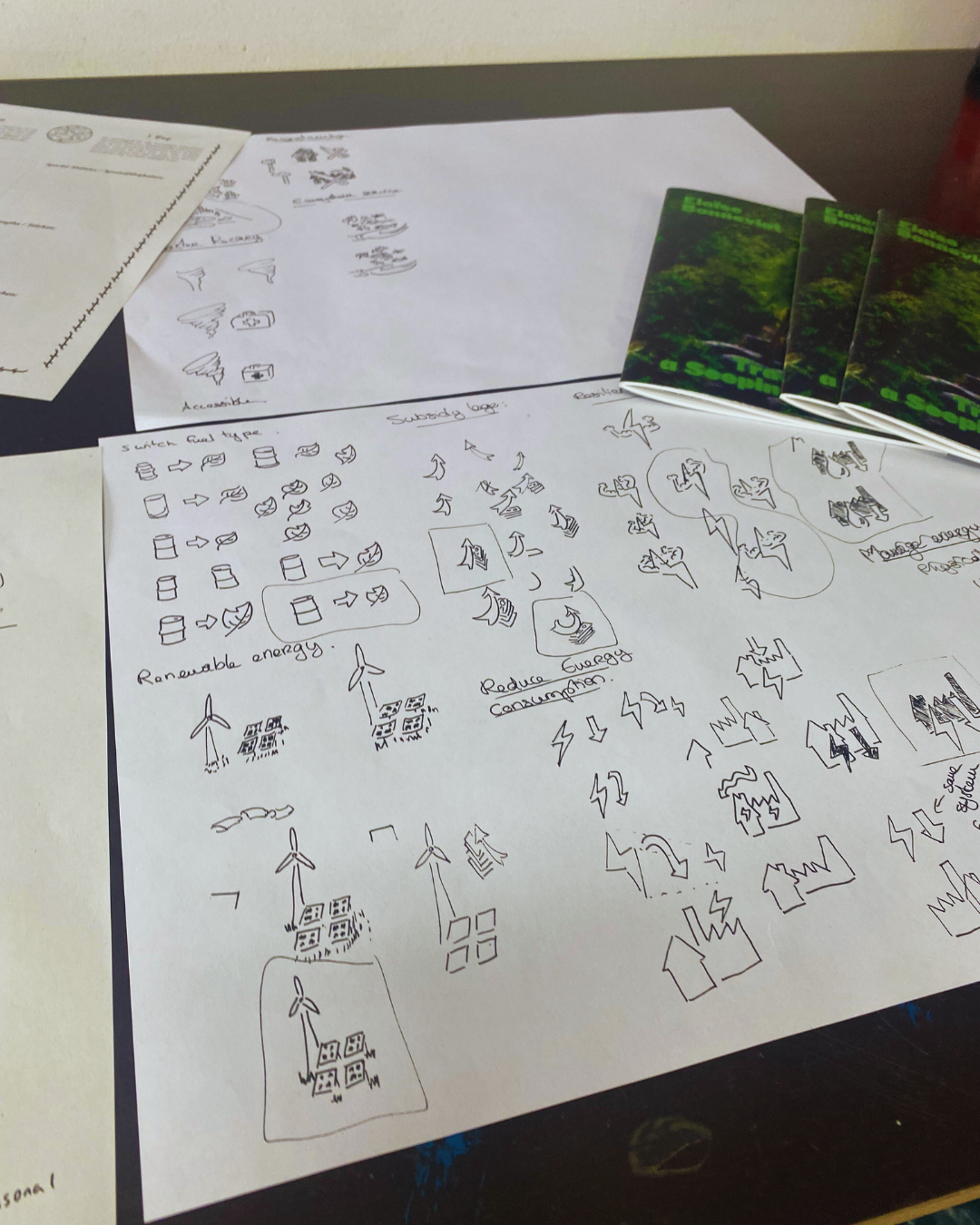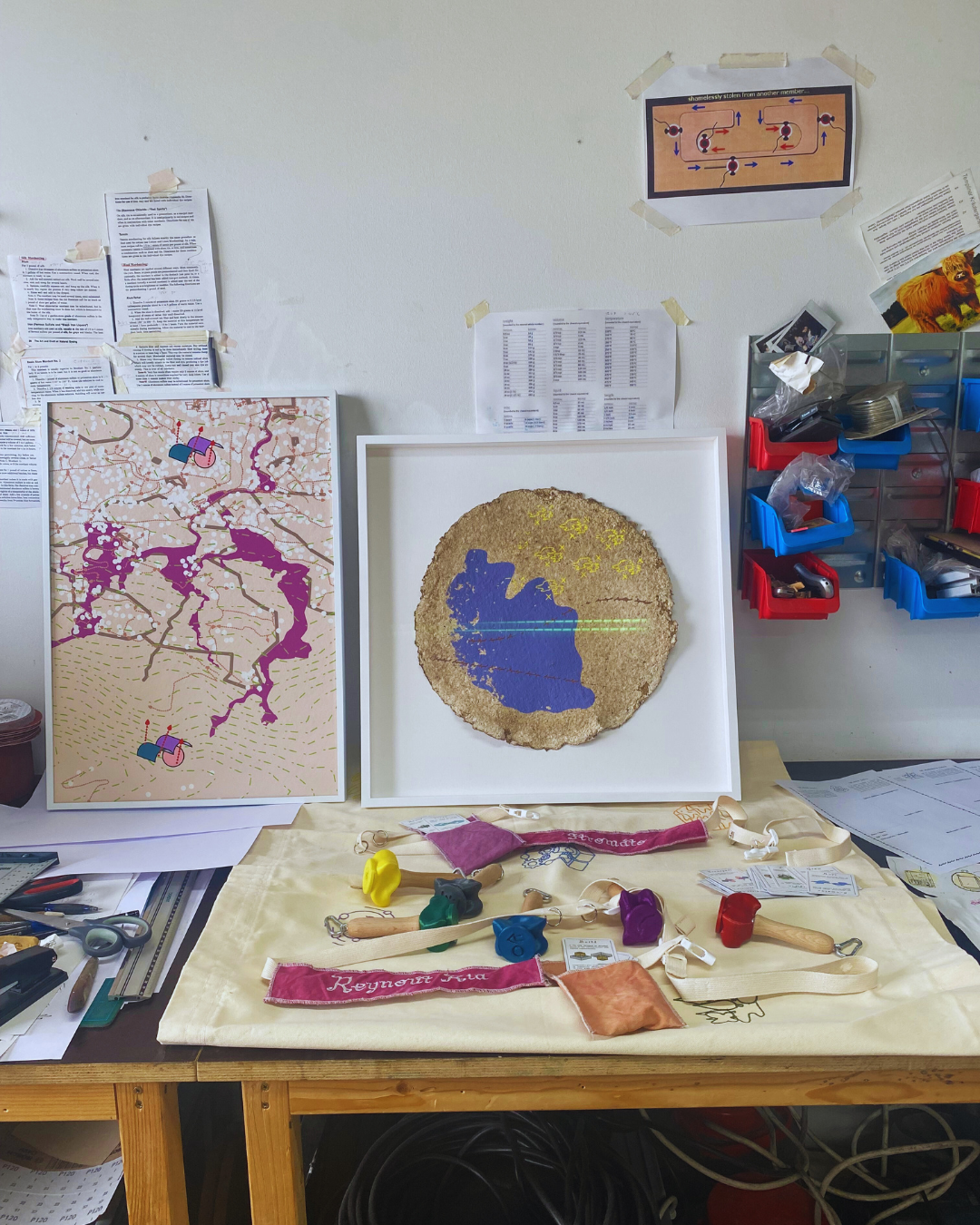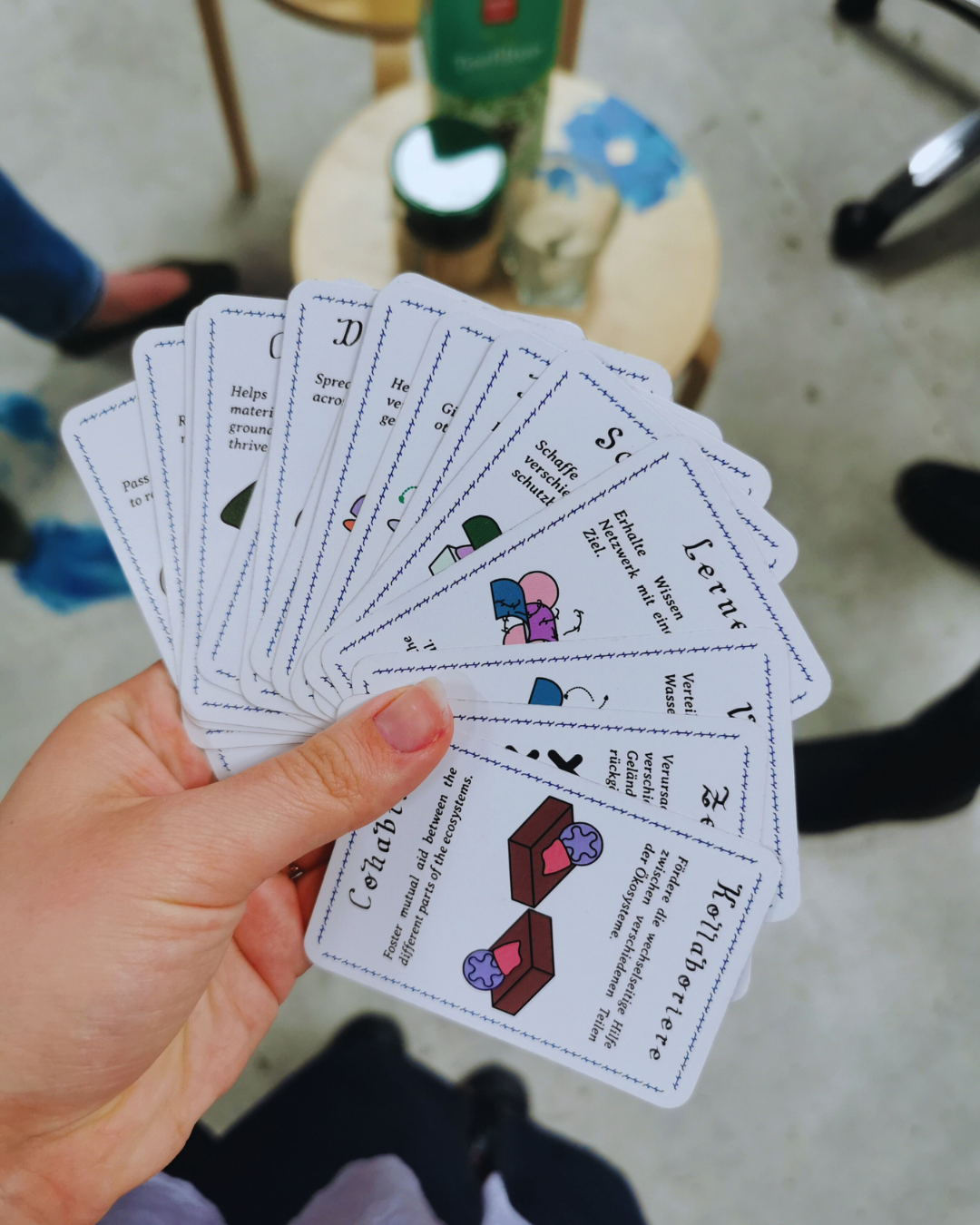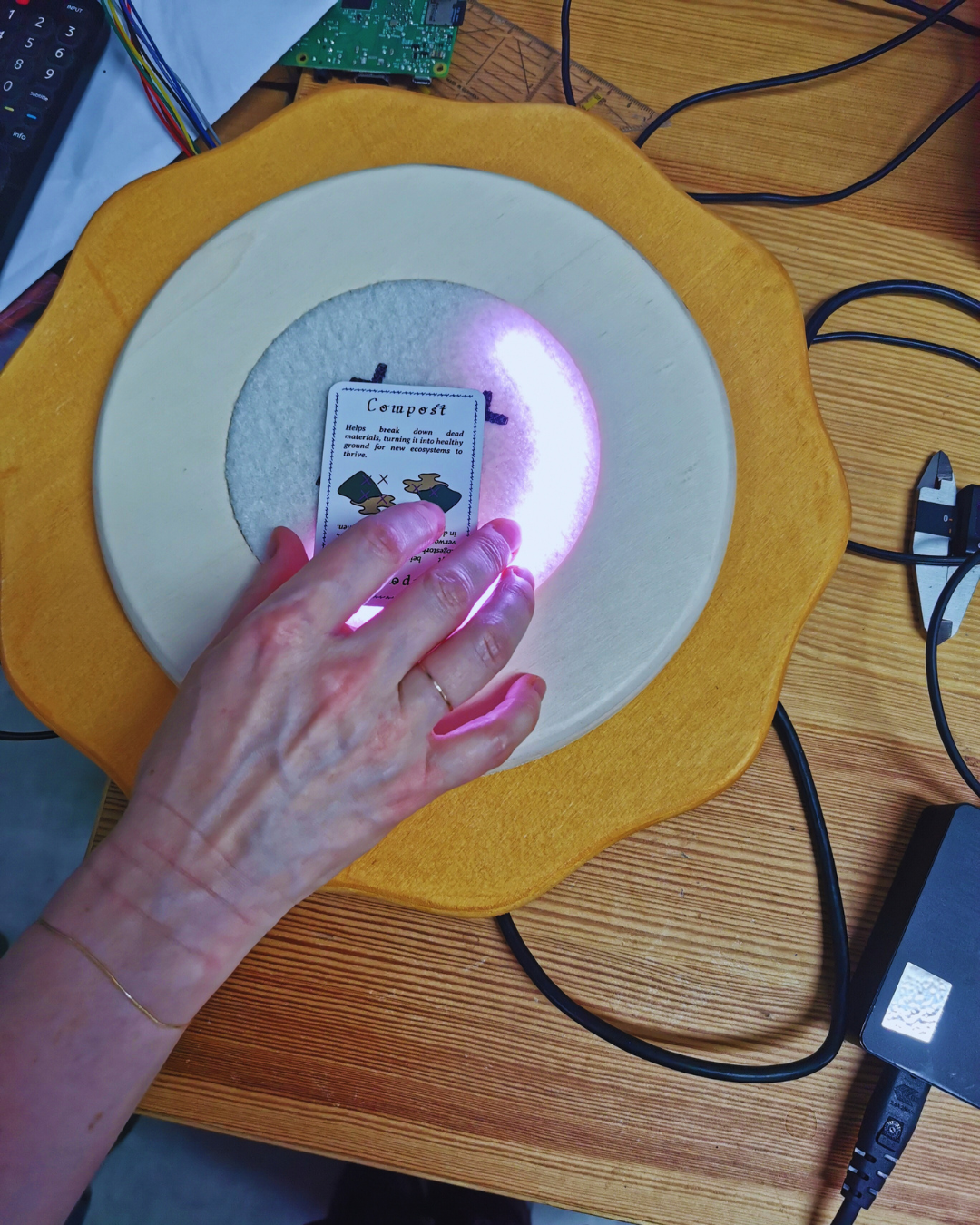Eloïse Bonneviot and Anne de Boer are a Franco-Dutch artist duo based in Berlin. After meeting and studying at the Gerrit Rietveld Academy, their practice gradually evolved into a collective and then a duo. Together, they question our relationship with the living and develop the idea that nature and technology are not two notions that automatically exclude each other, but that they co-construct simultaneously. They also follow James Lovelock and Lynn Margulis‘s Gaia Hypothesis 1, that living beings (human and non-human) do not reside in an environment; they shape it.
This non-anthropocentric worldview ruled by interdependences and systemic phenomena led the duo to elaborate artworks as living experiments that can be seen and activated collectively, and which take the form of games: Board games, but also video games, in which the audience actively participates on the occasion of various events and performances. Competitive or collaborative, their games interweave analogue and digital actions: the use, for example, of cards to collect “in real life”, which, once activated on a buzzer in the exhibition, modify the videogame’s digital platform, blurring the boundaries between the real, the physical, and the digital world.
As part of an accessibility approach, the artist duo conceives original video game displays that take on unusual forms and simple techniques - like RFID, also used in the smart card systems we use every day for our bank cards or transport tickets - and become accessible to a public even unfamiliar with video games or digital media practices. Through various anticipatory or dystopian scenarios, the duo presents a sensitive world that reacts strongly to the actions of visitors who become players, inviting us to think about the environment and the ecosystem playfully and poetically.
-
James Lovelock and Lynn Margulis. “Atmospheric Homeostasis by and for the Biosphere: The Gaia Hypothesis.” Tellus,1974 ↩



